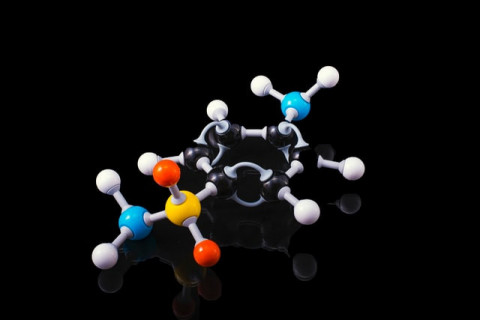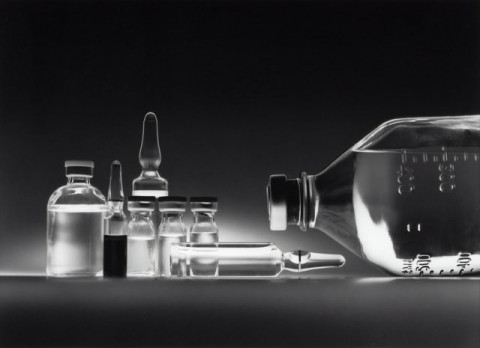
7 min
0
10.04.2022

Chem is the science of wizards. This is the real magic that allows you to turn, if not water, into wine, then some liquids into others, to create incredible miracles with mysterious chemical reactions. However, not everyone can comprehend the secret of this science. Especially hard for students who need to find a number of moles of substance. In this article, we will look at how to find the molar mass of ethanol. However, first, let's get to know the substance.
Ethanol - What Is This?
The molecular formula of this substance is C2H5OH.
The chemical formula of this substance is C2H6O.
The molecular mass always equals 46,07 g/mol.
The molar mass always equals 46,07 g/mol.
The number of atoms: An ethanol molecule comprises one oxygen atom, two carbon atoms, and six hydrogen atoms.
The boiling point varies +/- 78,37 °C.
Melting point varies +/- −114,3 °C.
Ethanol is an organic substance, monohydric alcohol, a product of natural fermentation of organics. EtOH is in demand across various manufacturing industries, and people know him by the following names: ethyl alcohol (CH3CH2OH), absolute alcohol, methylcarbinol, grain alcohol, and wine alcohol.
Physical Properties of Ethanol
Ethanol is a transparent and fairly volatile liquid substance with a very characteristic pungent odor. The product tastes sharp, intensely aromatic, has a slightly sweetish aftertaste, and is similar to methanol. It does not show signs of spontaneous combustion but is easily flammable in any contact with open fire.
Ethanol has the properties of a highly efficient solvent. Miscible with many organic and inorganic substances. It is noticeably lighter than water, being in an open container, denatured, evaporates abundantly, spreading a characteristic alcohol smell. Vapors of the substance are also flammable, form vapor-air mixtures with atmospheric air, the ignition of which at specific concentrations is comparable to the explosive effect.
Chemical Properties of Ethanol
This substance belongs to the group of chemically active reagents, has properties inherent in the class of acids, but expressed in a slightly less bright form. However, ethanol interacts with members of the alkaline earth metal group. The result of this interaction is the formation of ethylates.
Under certain conditions, it reacts with carboxylic acids, forming esters during this interaction. It also oxidizes to oxalic acid, acetaldehyde, and acetic acid. Also, ethanol actively creates a chemical compound with potassium, methyl, magnesium, copper hydroxide, chloride.
Ethyl alcohol reacts with sulfuric acid, and when the temperature of the reaction conditions rises to 120 ° C, diethyl ether is formed. And if the temperature at which this interaction will occur is brought to 350 - 500 ° C, then ethylene is formed.
How Find Ethanol Molar Mass?
To find the molar mass of ethanol, you can use an algorithm like this:
1. Take periodic table. If you have a chemistry book, there is a table in the back or front spread. If you don't have a book on hand, find a spreadsheet online. This table is necessary to find the valence, atomic weights of substances in the chemical equation.
2. Make the correct chemical formula. To find out how substances interact with each other, you can use the periodic table. In our case, the chemical formula of ethanol looks like this - C2H5OH.
3. Then, open the periodic table and find out the valencies of all the substance components. This method is excellent because it is enough to look at the group, period and calculate the data if you do not know the valence. Next, you can write out the formula.
4. With all the data, you can find the molar mass of ethanol. Open the periodic table again and find the atomic weight of each element in the chemical. As a result, you get the following formulas:
Mr (C2H5OH) = 2 · Ar (C) + 6 · Ar (H) + Ar (O).
Mr (C2H5OH) = 2 · 12 + 6 · 1 + 16 = 24 + 6 + 16 = 46.
Based on the formula, you need to add all the elements to solve the task.
5. You are almost at the home stretch. You need to find the mass of one molecule of each ethanol element. Use Avogadro's number for this process:
m (C2H5OH) = Mr (C2H5OH)/NA = 46/6,02 · 1023 = 7,6 · 1023g
An Example of How to Solve Tasks With Molar Mass of Ethanol
Let's look at an example of how to solve problems with finding the molar mass.
Task: How to find the molarity of ethyl alcohol when interacting with water?
Decision: Ethyl alcohol or ethanol interacts with the inlet to form a solution. To find out the resulting solution's molarity, we need to calculate the amount of ethyl alcohol. Since ethanol is a liquid substance, we cannot express it in grams. However, we can apply other properties to solve the task and determine ethanol's molarity in the aqueous solution.
First, we will measure 10 ml of ethanol and pour it into a glass. Applying the density of ethanol, we can calculate the grams of the measured substance. Using the ethanol density established by scientists, we know that it is 0,790 g/cm3. Density must be expressed in terms of mass per volume. In this formula, one cubic centimeter is always equal to one milliliter. To calculate how many grams of ethanol to contain in the solution, we must multiply the amount of the measured substance by its density. We get: 10 ml 0,790 g / cm3 = 7,9 g of ethanol.
We can now divide grams by molar mass. To do this, we can calculate the number of moles of added substance: 7.9 g / 46 g / mol = 0.17 mol ethanol based on this formula. Now is the time to add water to ethanol and get the volume of the solution. For example, we will mix water and ethanol to form a 250 ml solution.
Next, we need to divide milliliters by liters by the conversion factor. By splitting our data, we get 0,17 mol of ethanol in 250 ml of solution. We can do this by dividing 250 ml by 1000 ml/L. As a result, we get 0,17 mol per 0,25 L.
The final step is to determine the molarity in moles per liter. We already know that 0,17 mol of ethanol is needed per 0,25 L of solution. Next, you need to make up the proportion:
0.17 mol / 0,25 L = X mol/L
X = 0,68 mol/L
Based on the data, we see that ethyl alcohol's molarity when interacting with water is 0,68 mol/L.
How is Ethanol Mined?
In industry, ethyl alcohol is obtained by anaerobic fermentation of vegetable carbohydrates in yeast and ethylene's hydration. There are ways to get ethyl alcohol:
- Direct synthesis from CO and H2 or through methyl alcohol. The primary industrial method for the production of synthetic ethyl alcohol is the direct hydration of ethylene.
- Catalyst - orthophosphoric acid on a porous carrier. As by-products are formed: acetaldehyde, diethyl ether, crotonaldehyde, acetone, C3-C4 alcohols, methyl ethyl ketone, low molecular weight polyethylene.
Absolute ethyl alcohol is carried out by distillation with a third component, which forms an azeotrope with ethyl alcohol and water.
Where is Ethanol Used?
Ethanol is used in different directions. We will consider the most popular:
- Fuel. Ethanol is an excellent and relatively inexpensive fuel. Cars and some rockets fly on it. True, it is usually used in a mixture of gasoline.
- Raw materials. A considerable amount of ethanol is consumed by the chemical industry. Companies get acetic acid, diethyl ether, ethyl acetate from ethanol.
- Solvent. Ethanol is a beautiful solvent. It is not without reason that it is used in perfumery as the basis for many perfumes and aerosols. Doctors use ethanol for medical purposes to prepare some solutions.
- Antiseptic. Medicine in its arsenal actively uses a variety of poisons, including ethanol. In ethyl alcohol, bacteria die perfectly. Therefore, before taking blood for analysis, the skin at the future puncture site is wiped with a cotton swab dipped in alcohol.



